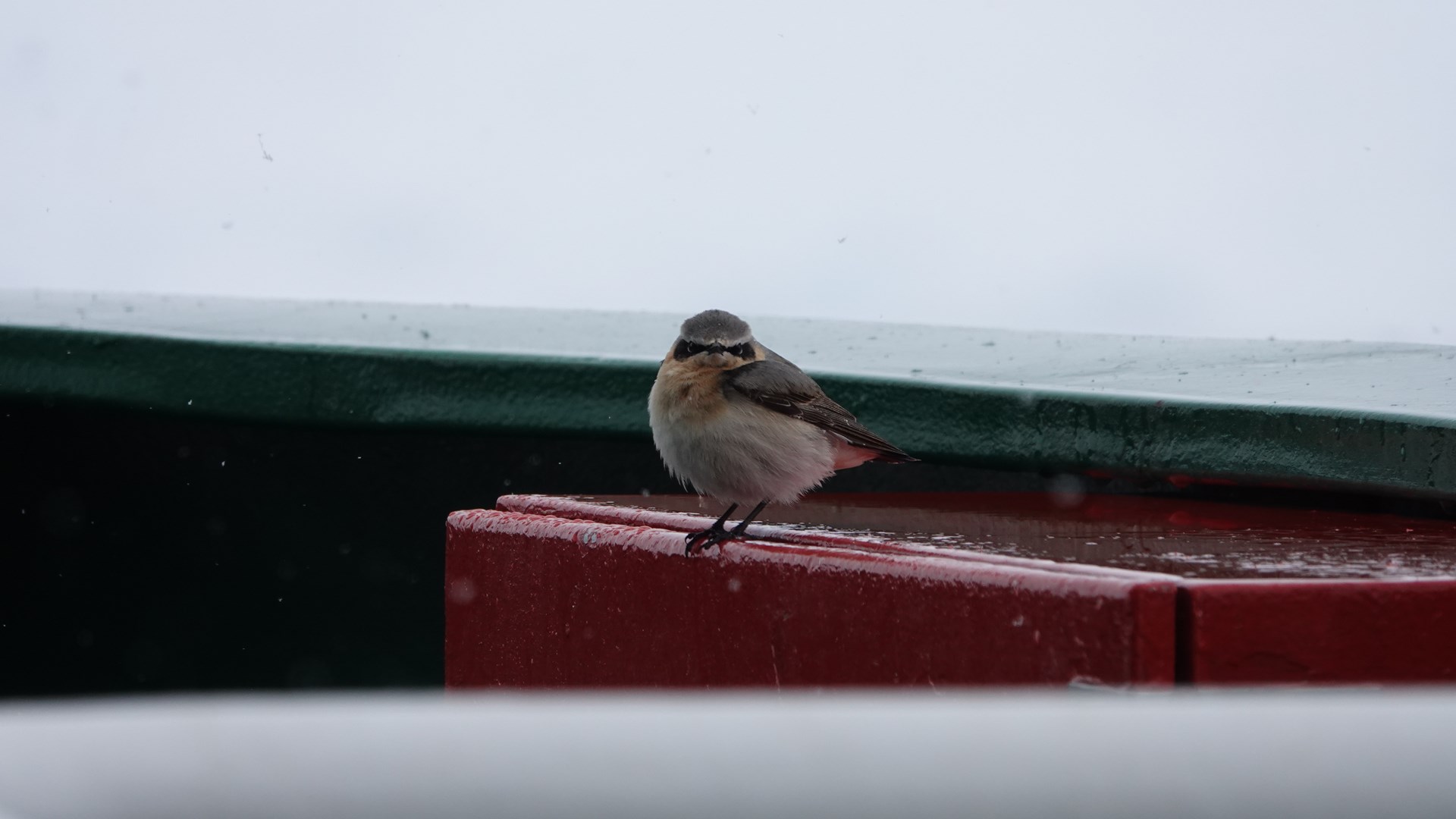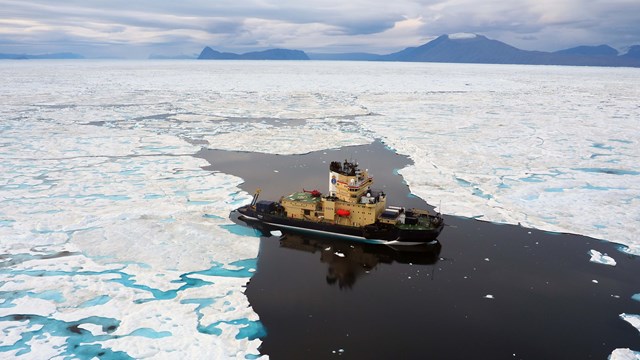A flying free rider
 The ARTofMELT 2023 expedition is visited by a northern wheatear. Photo: Agnetha Folestad
The ARTofMELT 2023 expedition is visited by a northern wheatear. Photo: Agnetha Folestad
Arctic Ocean, 14 May 2023.
Position: N80°15.3' W001°45.14'
On the daily schedule that is entered into the digital information system on board, it is important to write the day and date, because otherwise, no one would keep track of which day it is. We go to bed with a tentative plan for the coming day so that everyone knows roughly what to expect tomorrow, but then it is always the weather and ice conditions that guide us. The morning meeting with the expedition management begins with a weather briefing with the meteorologist, after which research activities are prioritized. The days are rolling by, and a week has passed since the expedition!
After about two days' travel, a small reddish bird was discovered flying around the ship at 79 degrees north when we were already in a white, snow-covered ice cap. The poor little thing, which must have flown on board before arriving in Svalbard, was more like a bushwhack, but still not. An email with an attached picture to the knowledgeable on-call biologist at the National Museum of Natural History in Stockholm, Didrik Vanhoenacker, solved the mystery: "Northern wheatears in the Arctic are often rustier red than Swedish wheatears. This applies to both the Greenlandic subspecies and wheatears that breed on the Russian tundra.” It's not the first time Didrik explains unusual observations to us who move in northern latitudes - a much appreciated resource!
Several low pressures have been moving in over our position, and a few different blizzards and high wind speeds have limited our ability to work outdoors. On stormy days when outdoor work becomes difficult, we are especially grateful to have the small gym at Oden. It is well-frequented, and sometimes we run different training sessions in groups.
On Saturday evening, we held our own Schlagerfestival with voting. Our result agreed surprisingly well with the actual result, out in the other world, except that Finland won and Sweden came second.
The ice is challenging, difficult to navigate, and full of dykes and ridges that not even strong Oden can handle. Oden stuffs forward, but as soon as we stop, we drift back, and it's very slow going north. The ice pressure is hard, and during ice reconnaissance with the helicopter, it can look as if there are navigable routes ahead, but once back on Oden, you regain perspective and realize what forces are in the ice.
Text: Åsa Lindgren, Expedition Coordinator

